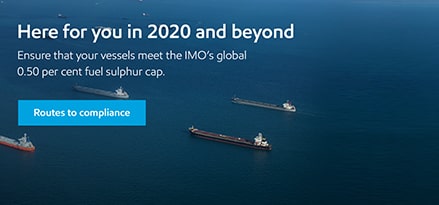What Does IMO's 0.50% Sulphur Cap Decision Mean for the Bunker Supply Chain?

According to Martyn Lasek, Editor of Ship and Bunker,the IMO's decision to implement a 0.50% sulphur cap on marine fuel from 2020 is arguably one of the industry's most defining moments since the shift away from coal.
The current global sulphur cap is 3.5%, while the average sulphur content of today's heavy fuel oil (HFO) bunkers - by far the most common type of marine fuel burned today - is around 2.7%. Only vessels that equip themselves with exhaust gas cleaning systems (scrubbers) will be able to continue burning these same bunkers from 2020, and at least one recent survey estimates around 19% of shipowners will do just that. Everyone else will have to burn a compliant bunker fuel.
A number of producers are developing compliant 0.50% sulphur fuel oil products, but the difficulty in creating these blends means their supply is likely to be restricted and availability limited to major refining centres such as Singapore and ARA. A small but growing number of vessels will use liquefied natural gas (LNG) and other compliant alternative bunkers (having been specifically designed or modified to do so) meaning opportunities will emerge for suppliers dealing in these niche products.
The vast majority of vessels are expected to switch to using MGO. This is the easiest route to compliance as it requires near zero upfront investment from owners, but it will mean higher bunkers bills; for example, Ship & Bunker data indicates that over the last five years the average premium for MGO over HFO in Rotterdam was $255/mt. But the shift in demand away from fuel oil is also expected to cause HFO prices to fall and, conversely, MGO prices to rise.
Another consequence of this increased cost is buyers will need higher levels of credit, and suppliers will need a similar increase in liquidity if they wish to continue to deal with the same volume of bunkers they do today.
Will there be sufficient supply of compliant product to meet demand? An official IMO study says there will, an alternative BIMCO backed study suggests otherwise. Questions over scrubber uptake levels, how soon and how strict policing of the new rules will be, as well as calls for a phased introduction to the new cap (rather than a "hard" start for all on January 1, 2020) means refiners have little idea what the true demand for MGO in 2020 will be. What we do know is that any response to a lack of demand will be slow. Investing in technology to convert fuel oil into distillates is not only expensive ($1 billion+ per refinery) it is also time consuming to implement (5-7 years). Buyers can expect price spikes if there is a shortfall.
MGO and HFO have very different handling characteristics and should only be co-mingled after careful compatibility testing. This means vessels, as well as storage and bunkering infrastructure, will all need investment to accommodate the shift in HFO/MGO demand. While this will be of less concern at major hubs, buyers can expect the supply of compliant product in smaller ports to be decidedly less assured, at least initially.
Finally, we should not forget that different fuels mean different lubes; the buyers and suppliers of these products will also see an associated - and equally unclear - shift in their supply and demand picture.
So as we can see, the new cap brings with it not only great change and the need for investment from all parties in the bunker supply chain, but many challenging questions that are yet to be answered.
The new rules come into force in just under 33 months’ time.
